As far as bird photography is concerned, we are very fortunate. Companies such as Sigma and Tamron have recently released lenses that zoom to 600 millimetres, giving photographers more choice when it comes to long lenses. Canon and Nikon, in addition to making their own long lenses, are producing camera bodies with increasingly higher resolution, which also benefits bird photo graphers. However, as focal length and resolution increase, so too does the need for a steady platform from which to shoot.

There are a number of ways in which you can create a stable shooting position for your equipment. Some of them are quite simple and particularly relevant for those people who photograph while out walking or who use their vehicle as a mobile hide and photograph out of an open window.
It is possible to hand-hold some, or perhaps all, of the telephoto lenses that are used for bird photography, but that depends on the size of your lens as well as your own frame and physical strength.
When photographing, I hand-hold a 500-millimetre lens. I use the tripod collar to rest my hand, which also means that my grip on the lens barrel is kept away from the focus ring, so I don’t accidentally shift the focus while I am shooting. I seldom use the manual focus ring when I shoot, so my grip suits me. You may have a different way of holding your lens that works for you. Photographers who are physically bigger than I am sometimes hold a lens of a comparable size at the furthest end of the lens hood to gain greater stability.
When choosing between a fixed or a zoom lens, it is relevant to consider just how much more difficult the zoom lens might be for you to manage. With a fixed lens, such as my 500-millimetre, my left hand really only has to support the lens and aim it. With a large telephoto zoom lens, my left hand has to assume another role, that of managing the zoom ring. For me this means that it is easier to hand-hold my 500 f4 fixed lens than to hand-hold Canon’s EF 200-400L f4 IS 1.4x extender lens. The same applies to the big Sigma 150:600 Sport lens. Both those zooms are too long and heavy for my left hand to comfortably control the focal length without wobbling. Again, this is not the case for many photographers who are physically larger than I am. Although hand-holding a lens can be physically demanding, it allows me the most flexibility to easily track moving subjects.
This story is from the January/February 2017 edition of African Birdlife.
Start your 7-day Magzter GOLD free trial to access thousands of curated premium stories, and 8,500+ magazines and newspapers.
Already a subscriber ? Sign In
This story is from the January/February 2017 edition of African Birdlife.
Start your 7-day Magzter GOLD free trial to access thousands of curated premium stories, and 8,500+ magazines and newspapers.
Already a subscriber? Sign In

EXPLORING NEW HORIZONS
Keith Barnes, co-author of the new Field Guide to Birds of Greater Southern Africa, chats about the long-neglected birding regions just north of the Kunene and Zambezi, getting back to watching birds and the vulture that changed his life.

footloose IN FYNBOS
The Walker Bay Diversity Trail is a leisurely hike with a multitude of flowers, feathers and flavours along the way.

Living forwards
How photographing birds helps me face adversity

CAPE crusade
The Cape Bird Club/City of Cape Town Birding Big Year Challenge
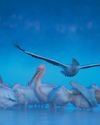
water & WINGS
WATER IS LIFE. As wildlife photographer Greg du Toit knows better than most.
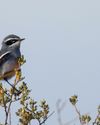
winter wanderer
as summer becomes a memory in the south, the skies are a little quieter as the migrants have returned to the warming north. But one bird endemic to the southern African region takes its own little winter journey.
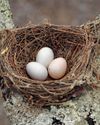
when perfect isn't enough
Egg signatures and forgeries in the cuckoo-drongo arms race
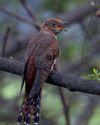
Southern SIGHTINGS
The late summer period naturally started quietening down after the midsummer excitement, but there were still some classy rarities on offer for birders all over the subregion. As always, none of the records included here have been adjudicated by any of the subregion's Rarities Committees.
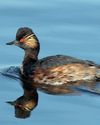
flood impact on wetland birds
One of the features of a warming planet is increasingly erratic rainfall; years of drought followed by devastating floods. Fortunately, many waterbirds are pre-adapted to cope with such extremes, especially in southern Africa where they have evolved to exploit episodic rainfall events in semi-arid and arid regions. But how do waterbirds respond to floods in areas where rainfall - and access to water - is more predictable? Peter Ryan explores the consequences of recent floods on the birds of the Western Cape's Olifants River valley.
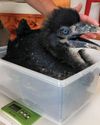
a star is born
It’s every producer’s dream to plan a wildlife television series and pick the right characters before filming.